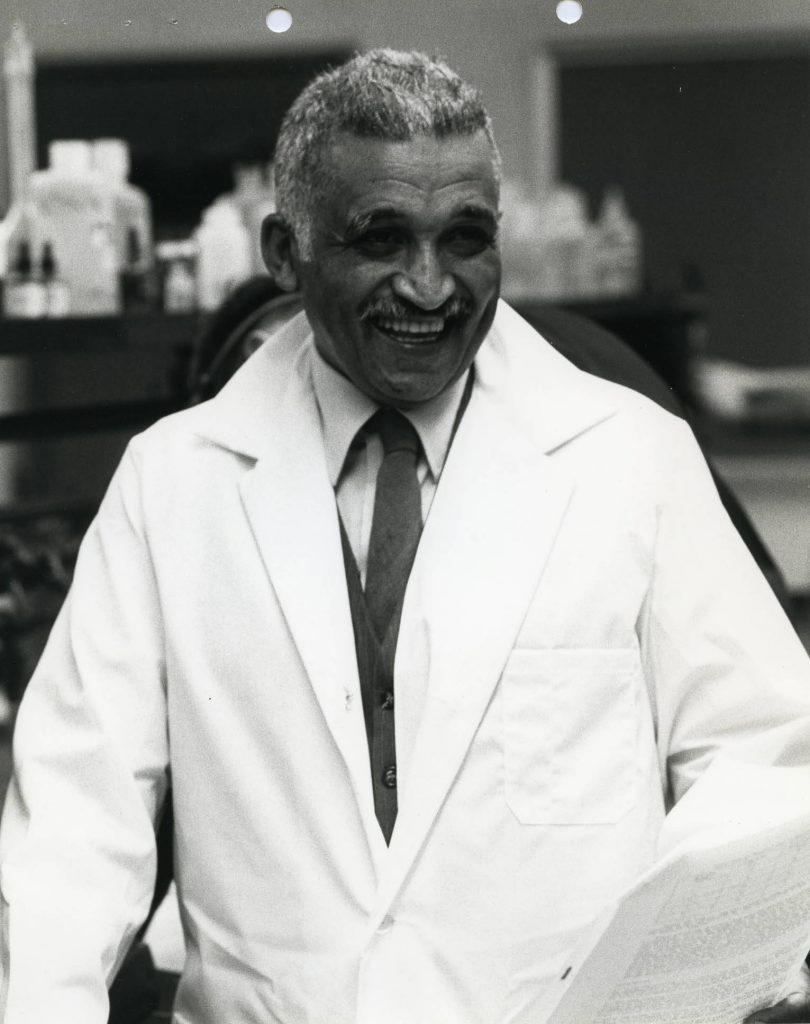Samuel Proctor Massie Jr. (1919-2005) was an African American chemist who worked on the Manhattan Project. He later became the first African American to teach at the United States Naval Academy.
EARLY YEARS
Born in Little Rock, Arkansas, Massie graduated high school at the age of thirteen. In 1934, after completing his studies at Dunbar Junior College in Little Rock, he applied for admission to the University of Arkansas, but was denied acceptance because of his race. Instead, he began studying at Arkansas Agricultural, Mechanical, and Normal College (now the University of Arkansas at Pine Bluff) where in 1937, at age eighteen, he graduated summa cum laude with a B.S. in Chemistry.
Driven by a desire to find a cure for his father’s asthma, Massie continued his academic studies. In 1940, he earned a master’s degree in Chemistry from Fisk University in Nashville, TN. The following year, he was accepted to a doctorate program in organic chemistry at Iowa State University, but was not allowed to reside on campus or use the same labs as white students.
While studying at Iowa State under the supervision of Dr. Henry Gilman, Massie began working on the Manhattan Project at the University’s Ames Laboratory.
In May 1943, after completing the second year of his Ph.D. program, Massie returned home to Little Rock to attend his father’s funeral. There, he sought to renew his draft deferment. However, a member of the Arkansas state draft board told Massie he had “too much education for a ni**er” and denied his application. Massie reached out to Gilman, who then recruited him to work on the Manhattan Project.
MANHATTAN PROJECT
Massie recalled in a 1964 interview, “All of us had to make a decision how we would serve the war efforts. I dropped out of school and went into the chemical warfare service with Dr. Gilman at Ames.” He joined the Manhattan Project full time as a research assistant to Gilman at Ames Laboratory from 1943-1945. At Ames, Massie contributed to research focusing on converting uranium isotopes into usable liquid compounds for the bomb.
LATER YEARS
After the war, Massie received his Ph.D. in Organic Chemistry in 1946. He went on to teach chemistry and became chair of the Chemistry Department at Langston University in Oklahoma. He was elected to the Oklahoma Academy of Sciences in 1953.
Later that year, Dr. Massie returned to Fisk University, where he served as a professor of chemistry and chaired the institution’s Chemistry Department. Beginning in 1960, he became an Associate Program Director for Special Projects in Science Education at the National Science Foundation in Washington, D.C. In this capacity, he helped colleges across the nation improve their laboratories and scientific resources. In 1963, Dr. Massie was selected as the President of North Carolina College (now North Carolina Central University.)
Dr. Massie’s accomplishments and research attracted the attention of President Lyndon Johnson, who in in 1966 appointed him as the first African American professor at the US Naval Academy in Annapolis, Maryland. Yet even in this capacity, he still faced discrimination. For example, he and his wife Gloria were forced to live in Laurel, MD after real estate agents in Annapolis refused to show them homes. In 1977 Dr. Massie was appointed as the chair of the Department of Chemistry at the Naval Academy. He served in this position until 1981.
While at the Naval Academy, Dr. Massie’s research focused on anti-bacterial agents and on combating infections such as malaria, herpes, and meningitis. He, along with other colleagues, received a patent for an antibiotic used to effectively treat gonorrhea.
Dr. Massie retired from the Naval Academy in 1993. The US Department of Energy created the Dr. Samuel P. Massie Chairs of Excellence in 1994, which provide African American students with an opportunity to pursue research in environmental studies. In 1998, Dr. Massie was named one of the 75 most distinguished chemists of the 20th century. He was one of the three African Americans honored with this distinction.
Dr. Massie died on April 10, 2005 at the age of 85 in Laurel, Maryland.





